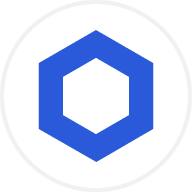Chainlink LINK Reserve: A Decentralized Approach to Sustainable Tokenomics
Introduction to Chainlink LINK Reserve
Chainlink has unveiled the Chainlink LINK Reserve, a pioneering on-chain mechanism designed to accumulate LINK tokens and ensure the long-term sustainability of its network. This initiative marks a significant evolution in Chainlink’s economic model, emphasizing sustainable tokenomics and solidifying its leadership in the blockchain and decentralized finance (DeFi) ecosystems.
What Is the Chainlink LINK Reserve?
The Chainlink LINK Reserve is a decentralized treasury system that accumulates LINK tokens to provide financial stability and foster the growth of the Chainlink network. Unlike centralized corporate buyback programs, the reserve operates in a decentralized framework, linking token demand to real-world revenue rather than speculative activity.
Key Objectives of the Reserve
The Chainlink LINK Reserve is designed to:
Support Long-Term Sustainability: Establish a robust financial foundation for the network.
Align Incentives: Encourage growth and adoption of Chainlink’s services.
Strengthen Tokenomics: Reinforce the economic model by tying token demand to tangible revenue streams.
How the Reserve Is Funded
The Chainlink LINK Reserve is funded through two primary revenue sources:
On-Chain Service Fees
A portion of the fees generated from Chainlink’s on-chain services is allocated to the reserve. Specifically, 50% of staking-secured service fees are directed to the reserve, ensuring a consistent stream of financial support.
Off-Chain Enterprise Revenue
Revenue from off-chain enterprise services is converted into LINK tokens and added to the reserve. This approach ties the reserve’s growth to the real-world adoption of Chainlink’s infrastructure.
Role of Payment Abstraction Infrastructure
Payment Abstraction infrastructure plays a vital role in the funding process. This system enables users to pay for Chainlink services using various assets, such as stablecoins or gas tokens. Payments are automatically converted into LINK tokens via decentralized exchanges like Uniswap V3, ensuring seamless integration and scalability.
Transparency and Operational Efficiency
Chainlink has implemented several measures to ensure transparency and operational efficiency in managing the reserve:
Analytics Dashboards
Real-time analytics dashboards provide stakeholders with insights into the reserve’s growth and usage, enhancing transparency.
Timelock Mechanisms
Timelock mechanisms prevent premature withdrawals, ensuring the reserve remains intact for long-term sustainability.
Cross-Chain Payment Consolidation
Chainlink’s Cross-Chain Interoperability Protocol (CCIP) supports cross-chain payment consolidation, further improving transparency and scalability.
Institutional Adoption and Market Impact
The Chainlink LINK Reserve is poised to benefit from increasing institutional adoption of Chainlink’s services. Financial institutions are leveraging Chainlink’s infrastructure for tokenized financial systems and DeFi applications, driving demand for LINK tokens.
Strengthening Tokenomics
By linking token demand to real-world revenue, the reserve enhances the sustainability of LINK’s tokenomics. This reduces reliance on speculative market activity and fosters long-term growth.
Operational Upgrades: Chainlink Runtime Environment (CRE)
Chainlink has introduced the Chainlink Runtime Environment (CRE) to optimize operational costs and improve efficiency. These upgrades complement the reserve by enhancing the scalability and reliability of Chainlink’s services.
Comparison to Traditional Corporate Buyback Programs
While the Chainlink LINK Reserve shares similarities with traditional corporate buyback programs, it operates in a decentralized manner. Unlike corporate buybacks that often aim to boost stock prices, the reserve focuses on sustainable growth and aligning incentives within the blockchain ecosystem.
Potential Risks and Challenges
Despite its benefits, the Chainlink LINK Reserve faces potential risks and challenges:
Regulatory Scrutiny: Increased mainstream adoption of blockchain projects may attract regulatory oversight.
Market Volatility: Broader market trends could impact the value of LINK tokens, affecting the reserve’s financial stability.
Impact on Smaller Stakeholders: Smaller node operators and stakeholders may encounter challenges in adapting to the new economic model.
Conclusion
The Chainlink LINK Reserve represents a groundbreaking approach to sustainable tokenomics in the blockchain space. By accumulating LINK tokens through on-chain service fees and off-chain enterprise revenue, the reserve ensures long-term network sustainability and aligns incentives for growth. With its focus on transparency, operational efficiency, and institutional adoption, the reserve reinforces Chainlink’s position as a leader in the blockchain and DeFi ecosystems.
© 2025 OKX. This article may be reproduced or distributed in its entirety, or excerpts of 100 words or less of this article may be used, provided such use is non-commercial. Any reproduction or distribution of the entire article must also prominently state: “This article is © 2025 OKX and is used with permission.” Permitted excerpts must cite to the name of the article and include attribution, for example “Article Name, [author name if applicable], © 2025 OKX.” Some content may be generated or assisted by artificial intelligence (AI) tools. No derivative works or other uses of this article are permitted.


